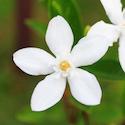Welcome to the wonderful world of jasmine! Imagine breathing in the most wonderful flowery smell and seeing nature's beauty in the delicate flowers. Jasmine is a plant that gardeners and flower fans have loved for a long time because of its pretty petals and amazing smell. There are many kinds of jasmine, each with its own special traits and cultural importance.
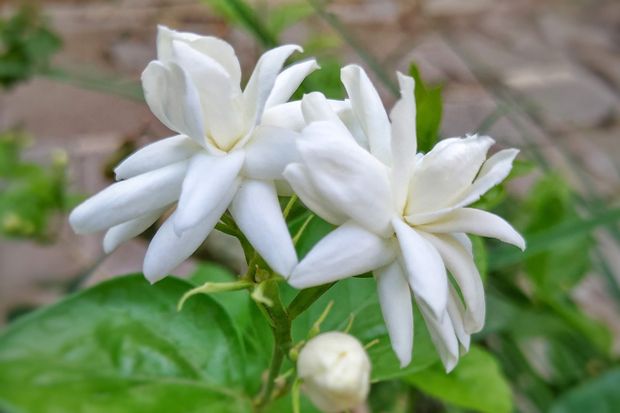
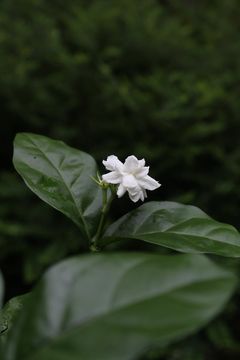
Among the various types of jasmine, Arabian Jasmine (Jasminum sambac) holds a special place. Originating from the Arabian Peninsula, this species is revered for its exquisite flowers and powerful fragrance. With its star-shaped white blossoms, Arabian Jasmine has become a symbol of purity, love, and beauty in many cultures around the world. It is often used in perfumery, religious ceremonies, and even as a token of affection. But, do you need to keep Arabian Jasmine indoors during winter?
Yes, it is advisable to keep Arabian Jasmine indoors during winter to protect it from frost and cold temperatures.
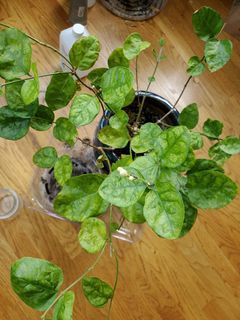
However, as the seasons change and winter arrives, gardeners are faced with the challenge of protecting their beloved plants from the harsh elements. Winter brings chilly temperatures, frost, and potential damage to delicate plants, including Arabian Jasmine. The cold weather can pose a significant threat to the well-being of your cherished jasmine plant, making it crucial to consider the best course of action for its survival.
The decision of whether to keep Arabian Jasmine indoors during winter requires careful thought and consideration. While Arabian Jasmine is a tropical plant that thrives in warm climates, it can be susceptible to damage caused by freezing temperatures and frost. Therefore, in regions with severe winters, it is often recommended to provide protective measures to ensure the plant's survival.
Bringing Arabian Jasmine indoors during winter serves as a safeguard against the potential harm that cold weather can inflict. By providing a controlled indoor environment, you create a haven where your jasmine plant can thrive despite the chilly conditions outside. This not only helps preserve its beauty but also promotes its overall health and longevity.
In the following sections, we will explore the key considerations and best practices for caring for Arabian Jasmine during winter. From understanding its temperature requirements to providing adequate lighting and moisture, we will guide you through the steps necessary to ensure the well-being of your cherished plant.
Is Arabian jasmine indoor or outdoor?
Arabian Jasmine (Jasminum sambac) can be grown both indoors and outdoors, depending on the climate and growing conditions. In its native regions with warm tropical climates, it is often grown outdoors year-round. However, in regions with colder winters or less favorable conditions, cultivating Arabian Jasmine indoors is a practical option. Indoor cultivation provides better control over environmental factors and protects the plant from temperature extremes and frost damage. Whether grown indoors or outdoors, Arabian Jasmine requires proper lighting, temperature, watering, and humidity management to thrive.
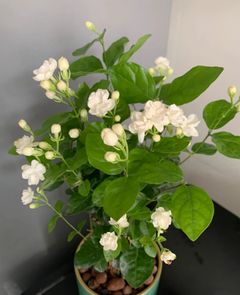
Arabian Jasmine (Jasminum sambac) is a versatile plant that can be grown both indoors and outdoors, depending on the climate and growing conditions. In its native regions, such as Southeast Asia and the Indian subcontinent, Arabian Jasmine thrives in warm tropical climates and is often grown outdoors year-round. However, in regions with colder winters or less favorable conditions, cultivating Arabian Jasmine indoors is a practical and popular choice.
When grown outdoors, Arabian Jasmine enjoys ample sunlight, typically requiring at least six hours of direct sunlight per day. It flourishes in well-draining soil that is rich in organic matter. Outdoor planting allows the plant to benefit from natural rainfall, provided the soil has good drainage to prevent waterlogging, which can be detrimental to the plant's health.
In contrast, growing Arabian Jasmine indoors provides greater control over environmental factors, making it possible to enjoy this fragrant beauty year-round, even in regions with harsh winters. Indoor cultivation ensures that the plant is shielded from temperature extremes and frost, which can cause damage to the delicate foliage and inhibit growth.
To successfully grow Arabian Jasmine indoors, provide it with bright, indirect light. Place the plant near a south or west-facing window where it can receive sufficient sunlight without being exposed to direct harsh rays. If natural light is limited, supplement it with fluorescent or grow lights to meet the plant's requirements.
Maintaining the right temperature is crucial for Arabian Jasmine's well-being. The plant prefers temperatures between 60°F to 75°F (15°C to 24°C) during the day and slightly cooler temperatures at night. Avoid exposing the plant to drafts or sudden temperature fluctuations, as this can stress the plant and affect its growth.
Indoor cultivation also requires proper watering and humidity management. Allow the soil to dry slightly between waterings, ensuring that it is evenly moist but not overly saturated. Arabian Jasmine appreciates higher humidity levels, so consider using a humidifier or placing the plant on a tray filled with water and pebbles to create a humid microclimate around it.
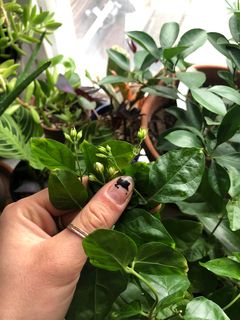
By understanding the growing conditions and adapting them to the specific needs of Arabian Jasmine, you can create a suitable environment for its successful growth, whether indoors or outdoors.
How do you overwinter Arabian jasmine?
Overwintering Arabian Jasmine (Jasminum sambac) is essential in regions with cold winters or unfavorable growing conditions. By taking proper care during the winter months, you can ensure the survival and thriving of your Arabian Jasmine plant.
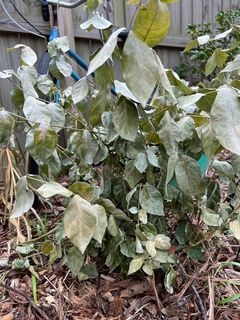
Here are some important steps to help you successfully overwinter Arabian Jasmine:
- Bring Indoors: As winter approaches and temperatures begin to drop, it is crucial to bring your Arabian Jasmine indoors. Choose a suitable location with bright, indirect light, such as near a south or west-facing window. Ensure the room temperature remains within the preferred range of 60°F to 75°F (15°C to 24°C) to provide a comfortable environment for the plant.

- Reduce Watering: During winter, Arabian Jasmine enters a period of dormancy, and its water requirements decrease. Allow the soil to dry slightly between waterings to prevent overwatering, which can lead to root rot. Adjust the watering frequency based on the moisture levels of the soil and the plant's needs.
- Limit Fertilization: Arabian Jasmine's growth slows down during winter, so reduce or suspend fertilization during this time. The plant requires fewer nutrients, and excessive fertilization can cause salt build-up in the soil.
- Monitor Humidity: Maintaining adequate humidity levels is important for Arabian Jasmine's health. Indoor environments tend to have drier air during winter due to heating systems. Increase humidity by using a humidifier, placing a tray of water near the plant, or misting the leaves regularly. This helps prevent the leaves from drying out and promotes overall well-being.
- Protect from Drafts: Arabian Jasmine is sensitive to drafts, which can cause stress and damage the foliage. Keep the plant away from drafts, such as doors, windows, and heating vents. Ensure it is placed in a location with consistent temperature and airflow.
- Inspect for Pests: While Arabian Jasmine is generally resistant to pests, it's important to inspect the plant regularly for any signs of infestation. Common pests such as aphids or spider mites can still affect indoor plants. If detected, treat the infestation promptly using appropriate organic or chemical methods.
When to Bring Arabian Jasmine Inside? Timing Matters
Knowing the right time to bring your Arabian Jasmine (Jasminum sambac) indoors is crucial for its winter survival. The timing will depend on your local climate and the specific needs of your plant.
Here are some general guidelines to help you determine when to bring your Arabian Jasmine inside:
- Temperature Threshold: Arabian Jasmine is sensitive to cold temperatures and frost. As a general rule, it's recommended to bring your plant indoors when the temperatures consistently drop below 50°F (10°C) during the day or 40°F (4°C) at night. However, individual tolerances may vary, and factors like wind chill and sudden temperature fluctuations should also be considered.
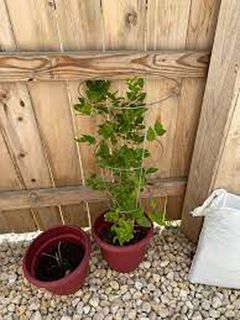
- Regional Climate: Understanding your regional climate is important in determining when to bring Arabian Jasmine inside. If you live in a region with mild winters where temperatures rarely reach freezing or stay above the recommended threshold, you may be able to keep your plant outdoors throughout the year. However, in colder regions or areas prone to frost, it is advisable to bring the plant inside to protect it from potential damage.
- Observation and Weather Forecast: Regularly monitor the weather conditions and observe your Arabian Jasmine's response to temperature changes. If you notice signs of stress, such as browning or wilting leaves, it's a good indication that it's time to bring the plant indoors. Additionally, paying attention to weather forecasts for any anticipated cold spells or frost events can help you plan ahead and take necessary precautions.
- Consider Transition Periods: Instead of abruptly moving your Arabian Jasmine indoors, consider a gradual transition period. This involves bringing the plant inside during the evenings or when temperatures are expected to drop significantly and returning it outdoors during warmer daytime hours. This gradual acclimatization helps the plant adjust to the indoor environment without experiencing sudden shock.
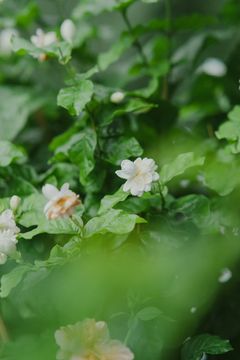
How cold hardy is Arabian jasmine?
Arabian Jasmine (Jasminum sambac) is a moderately cold-hardy plant, but its ability to tolerate cold temperatures depends on various factors, including the specific cultivar, local climate conditions, and the duration and intensity of the cold spell. Here are some key points to consider regarding the cold hardiness of Arabian Jasmine:
- Temperature Tolerance: Arabian Jasmine can withstand temperatures down to approximately 32°F (0°C) for short periods without significant damage. However, prolonged exposure to freezing temperatures or temperatures below 25°F (-4°C) can cause severe damage or even kill the plant.
- Regional Adaptability: Arabian Jasmine is native to tropical and subtropical regions and is more commonly grown as an indoor or container plant in regions with colder climates. It thrives in USDA hardiness zones 9 to 11, where the winter temperatures are generally mild.
- Protective Measures: To enhance the cold hardiness of Arabian Jasmine, you can take certain precautions during winter. These include providing a protective mulch layer around the base of the plant to insulate the roots, covering the plant with a frost blanket or cloth during extremely cold nights, and placing it in a sheltered location away from strong winds and cold drafts.
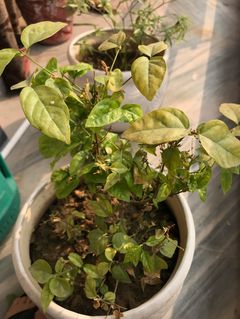
- Container Cultivation: If you live in a region with colder winters, growing Arabian Jasmine in containers allows you more flexibility to protect the plant during freezing temperatures. You can move the container indoors or to a protected area when the weather becomes unfavorable.
- Plant Health: A healthy Arabian Jasmine plant is generally better equipped to withstand colder temperatures. Providing proper care, including regular watering, appropriate fertilization, and pest control, helps maintain the plant's overall vigor and resilience.
It's important to note that individual plant responses to cold can vary, and factors such as microclimates within your garden or variations in cultivars can influence the plant's cold tolerance. Monitoring weather conditions, taking protective measures, and providing optimal care will contribute to the successful cultivation of Arabian Jasmine in regions with cooler climates.
Does Arabian jasmine go dormant?
Arabian Jasmine (Jasminum sambac) typically does not go fully dormant like some deciduous plants. However, it may exhibit reduced growth and flowering during the winter months, especially in regions with cooler temperatures. While not true dormancy, this period can be considered a period of relative rest for the plant. Here are a few key points to understand about the seasonal behavior of Arabian Jasmine:
- Reduced Growth: During the winter months, Arabian Jasmine may slow down its growth rate or even pause growth altogether. This reduction in growth is a natural response to the changing environmental conditions, such as shorter days and lower light intensity.
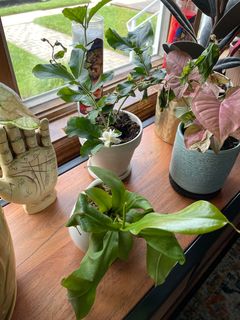
- Flowering Behavior: Arabian Jasmine is known for its fragrant white flowers, which typically bloom in abundance during the warmer months. In regions with cooler winters, the plant may produce fewer flowers or temporarily cease flowering altogether. However, with proper care and favorable conditions, it can still bloom sporadically during the winter months.
- Leaf Retention: Unlike deciduous plants that shed their leaves during dormancy, Arabian Jasmine usually retains its foliage throughout the year. However, the leaves may appear less vibrant or undergo some degree of yellowing or leaf drop during the winter, especially if the plant experiences colder temperatures or insufficient light.
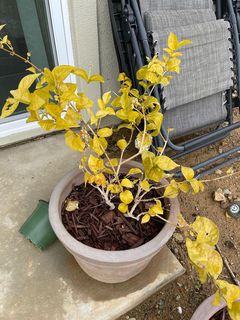
- Maintenance and Care: While Arabian Jasmine may experience a period of reduced growth and flowering during winter, it still requires regular care and attention. Continue to provide appropriate watering, ensure proper drainage, monitor for pests, and adjust the plant's location to optimize light exposure and temperature conditions.
Where is the best place to plant Arabian jasmine?
When it comes to finding the perfect spot to plant your Arabian Jasmine (Jasminum sambac) for optimal winter performance, there are a few factors to consider. While growing it indoors near a bright, south-facing window is highly recommended, you can also create a cozy outdoor sanctuary for your beloved plant.
Imagine a sunny corner of your home, adorned with the vibrant green foliage and delicate white blossoms of Arabian Jasmine. By choosing an indoor location, such as a sunny window sill or a well-lit room, you'll provide your plant with the warmth and sunlight it craves. The gentle rays of the sun will not only nourish its leaves but also encourage it to bloom and fill your space with its intoxicating fragrance.
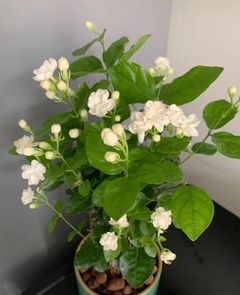
However, if you prefer to keep your Arabian Jasmine outdoors during winter, don't you worry! With a little extra care, you can create a protective haven for your plant. Find a sheltered spot in your garden or patio, shielded from the harsh winter winds. Consider placing it near a wall or a structure that can provide some natural protection.
To further enhance its winter resilience, you can surround your Arabian Jasmine with insulating materials like mulch or straw. These cozy layers will help regulate the soil temperature, keeping the roots snug and protected from the chilly air.
Remember, Arabian Jasmine is a delicate beauty, and winter can be challenging for its survival. Keep a close eye on temperature fluctuations and be ready to bring your plant indoors during severe cold spells. You can also cover it with a frost cloth or a lightweight blanket overnight to provide an extra layer of warmth.
By creating a nurturing environment, whether indoors or outdoors, you'll ensure that your Arabian Jasmine feels loved and cared for during the winter months. So go ahead, find that perfect spot, and let your Arabian Jasmine shine its brightest, enchanting you with its elegance and captivating fragrance throughout the frosty season.
Final thoughts
While Arabian Jasmine is hardy to some extent, it is recommended to bring it indoors during winter to safeguard it from potential damage caused by frost and extreme cold. By providing a warm and protected environment, you can ensure the well-being and longevity of your Arabian Jasmine.
Whether you choose to enjoy its beauty and fragrance indoors or create a cozy outdoor setup, the key is to prioritize the plant's needs and make adjustments accordingly. With proper care and attention, your Arabian Jasmine will continue to thrive and delight you with its exquisite blooms, even during the coldest months of the year.
